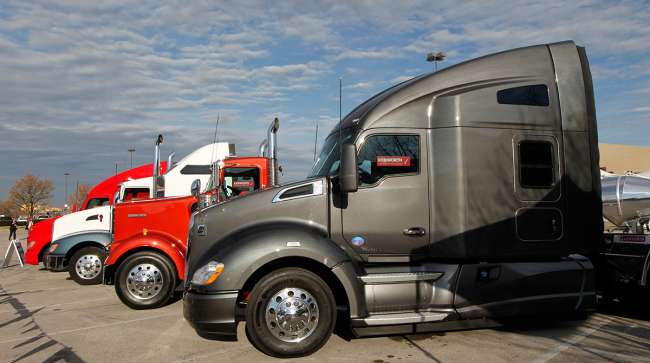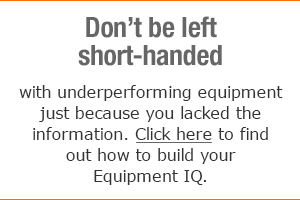Senior Reporter
Prices Rise 3% in March as Used-Truck Volumes Remain Strong

The average Class 8 truck sold in March underscored that more mileage on a younger truck need not be a detriment to a higher sales price — as the overall volume stayed in the mid-20,000 range.
There were 24,000 used Class 8 trucks sold in the United States in March, according to ACT Research Co.’s industrywide estimate. That was flat compared with 24,200 a year earlier.
The average price of a Class 8 in March was $41,707, according to ACT. That is up 3% from $40,479 in the 2017 period.
Mileage rose to 460,000, up 1% from 456,000 in the 2017 period.
At the same time, the average age dipped to 6 years and 9 months. A year earlier it was 7 years and 1 month.
“Based on comments from the dealers I am talking with, demand is quite strong in the used-truck market,” ACT Vice President Steve Tam told Transport Topics.
One thing that is helping support sales of used trucks is the booming demand for new trucks, he said.

Tam
“One of the more interesting comments I heard was because the new truck manufacturers have lots of full schedules, some folks who need a truck now, and can’t wait, are turning to late-model, low-mileage used equipment as a substitute. So that is helping support demand on the used-truck side.”
Trucks coming off leases are freshening the used-truck market, he said. “Young stuff, with lots of good life left in it, and at a substantial discount compared with new truck prices.”
Meanwhile, when it comes to trucks that are 3 to 5 years old, “So far, the incoming supply of used trucks is slower than predicted,” Chris Visser, senior analyst for commercial vehicles at J.D. Power, told TT.
“Based on historical deliveries, we should be seeing more 3- to 5-year-old trucks hitting the market. Demand has picked up, which is helping move inventory. I still expect to see an acceleration in the rate of trade-ins any time now,” Visser said.
Tam said his data shows prices for those trucks increasing, which suggest they are scarce. “Sellers are going to get some pretty good money for those trucks,” Tam said.
Demand for used trucks was not uniform across the country one survey found.
A survey of dealers selling Paccar Inc. brands, Kenworth Truck Co. and Peterbilt Motors Co. found 63% of dealers reported demand increased at their dealership in the first quarter compared with the previous fourth quarter, and 37% of dealers indicated used-truck demand was flat at their dealership.
On prices, 56% of the dealers indicated that wholesale prices were stable on average and 44% cited a modest uptick, when comparing the two periods.
“Furthermore, 13% of contacts revealed that they expect used truck prices to increase in 2018, 63% expect used truck prices to stay steady and 25% of contacts expect used truck prices to decline for the full year of 2018,” Neil Frohnapple, director of equity research at The Buckingham Research Group, wrote in a report to investors describing his survey results.
As expected, dealers reported a healthy number of retail sales in March, Visser said.
That month averaged 5.7 trucks sold per rooftop, which is the highest result in 10 months, according to J.D. Power.

Visser
“We have been forecasting sales to hover around the 5.5 level in 2018, and March’s result suggests the industry will hit that average. Stronger demand is due to tax breaks, a hot freight environment and generally improving economic conditions,” Visser said.
All those factors are pushing the new truck market, as well, and new Class 8 sales notched 19,384 in March, according to WardsAuto.com.
Tam said used truck sales typically outpace sales of new trucks.
“Remember that our used truck retail sales estimate includes trucks of all vintages and many not be the first resale. In other words, some of these units reported as retail sales are changing hands for the third or fourth time,” he said. “As such, we would expect used sales to outpace new sales as a matter or normal course. The last time it did not was in 2005-2006, when the new truck market saw it’s record peak as truckers scrambled to avoid the Environmental Protection Agency’s 2007 emissions mandate.”



